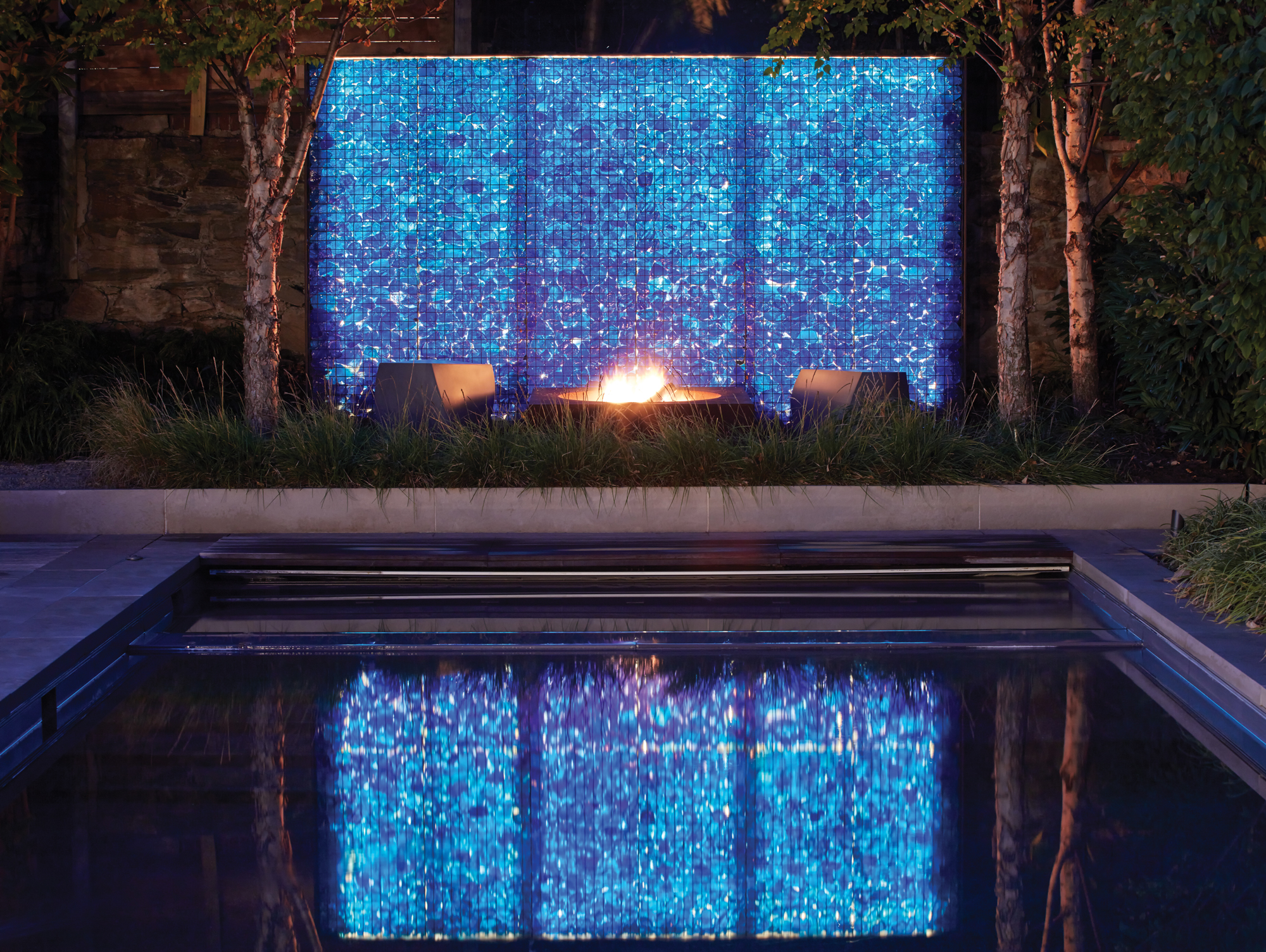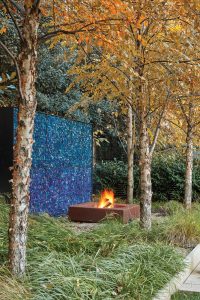- © 2025 Annapolis Home Magazine
- All Rights Reserved

Many forget that Georgetown, founded in 1751, was a tobacco port and mill town that predates Washington, D.C. There is an old-fashioned feeling to its quaint cobblestone streets, lined with Federal style architecture and historic brick and frame row houses. The gardens are especially intriguing and each has its own personality. A recent stroll reveals that tradition reigns. Roses climb ornate iron fencing while classical urns, neat privet hedges, and trailing ivy enchant porticos and miniature lawns.
 One historic home in Georgetown is worth special mention, for a duality exists within it. A tidy row of boxwood defers to the front facade, whose renovation by architect Robert M. Gurney, FAIA, was approved, as all homes are in this neighborhood, by the Historic Preservation Review Board. However, as one walks through the home, one finds a thoroughly modern addition that opens to an unusual garden. Designed by Campion Hruby Landscape Architects in conjunction with Gurney, the garden spans a double lot and offers something rare: a pool, fire pit, green space, play area, and fountain discretely arranged to encourage rest, meditation, and movement from one space to another.
One historic home in Georgetown is worth special mention, for a duality exists within it. A tidy row of boxwood defers to the front facade, whose renovation by architect Robert M. Gurney, FAIA, was approved, as all homes are in this neighborhood, by the Historic Preservation Review Board. However, as one walks through the home, one finds a thoroughly modern addition that opens to an unusual garden. Designed by Campion Hruby Landscape Architects in conjunction with Gurney, the garden spans a double lot and offers something rare: a pool, fire pit, green space, play area, and fountain discretely arranged to encourage rest, meditation, and movement from one space to another.
At its core, the garden has the strong lines and rigor of a minimalist structure. Trees, grasses, and blooming perennials accentuate the linear forms and at times overtake them, creating a profusion of natural beauty.
“I like to design a garden that has strong armature and I like the plants to be a bit untidy to create a sense of the tame and the wild. You create order in the garden and adorn it with plants that are whimsical and fun and colorful. You soften everything with plant material,” explains Campion.
Rising from the rear of the garden is a glistening sea glass sculptural wall. During the day, it reflects the light and is ever-changing. In the evening it is lit from behind and glows. “The sea-glass wall is composed of two tones of blue. The glass is dark at the bottom and light at the top and then there are shades in between,” says Campion. “We have always wanted to work with sea glass as a medium.”
 There was lots of trial and error. The first time Campion and Gurney tried to light the sculpture, it was too diffuse and the light did not reflect through the glass. “We added Styrofoam boards to the back, which helped project the light forward and make it bolder,” explains Campion.
There was lots of trial and error. The first time Campion and Gurney tried to light the sculpture, it was too diffuse and the light did not reflect through the glass. “We added Styrofoam boards to the back, which helped project the light forward and make it bolder,” explains Campion.
The garden’s dark paneled fencing creates horizontal rather than vertical planes, and nothing is too tall. Gurney points out that the hornbeams, a traditional tree in this area, are planted in straight lines. “They are very successful because they are dense and carex is planted underneath,” he notes of the dense undergrowth. There are many species of plants. The team had to remove a large cherry tree during construction, so in memorium they planted a line of young cherries along the fence, along with magnolias and single-stem river birches.
The garden is an extension of the home, almost a “reverse composition” of the floor plan, notes Gurney. Its design mirrors the home’s interior spaces. For example, the home’s central axis extends right out into the garden. Private spaces are suggested by the edge of a wall, the curve of a fire pit, a slight elevation, and the line of the pool. To walk from the home’s front garden to its back is to pass through time. Older centuries give way to the new. On this historic street, the sea-glass wall is a complete surprise. With a circle of fire dancing on its many hues, time and its narratives, and even Georgetown itself, are forgotten and there is a transcendent luminosity.
RESOURCES:
LANDSCAPE ARCHITECTURE: Campion Hruby Landscape Architecture (Kevin Campion, Jordan Crabtree), campionhruby.com, Annapolis, Maryland | LANDSCPAE INSTALLATION: Commonwealth Building and Design, commonwealthbuildingdesign.com and Evergro Landscaping, evergrolandscaping.com, Glenn Dale, Maryland | LIGHTING: Outdoor Illumination, outdoorillumination.com, Bethesda, Maryland | ARCHITECTURE: Robert M. Gurney, FAIA, robertgurneyarchitect.com, Washington, DC
Annapolis Home Magazine
Vol. 9, No. 2 2018